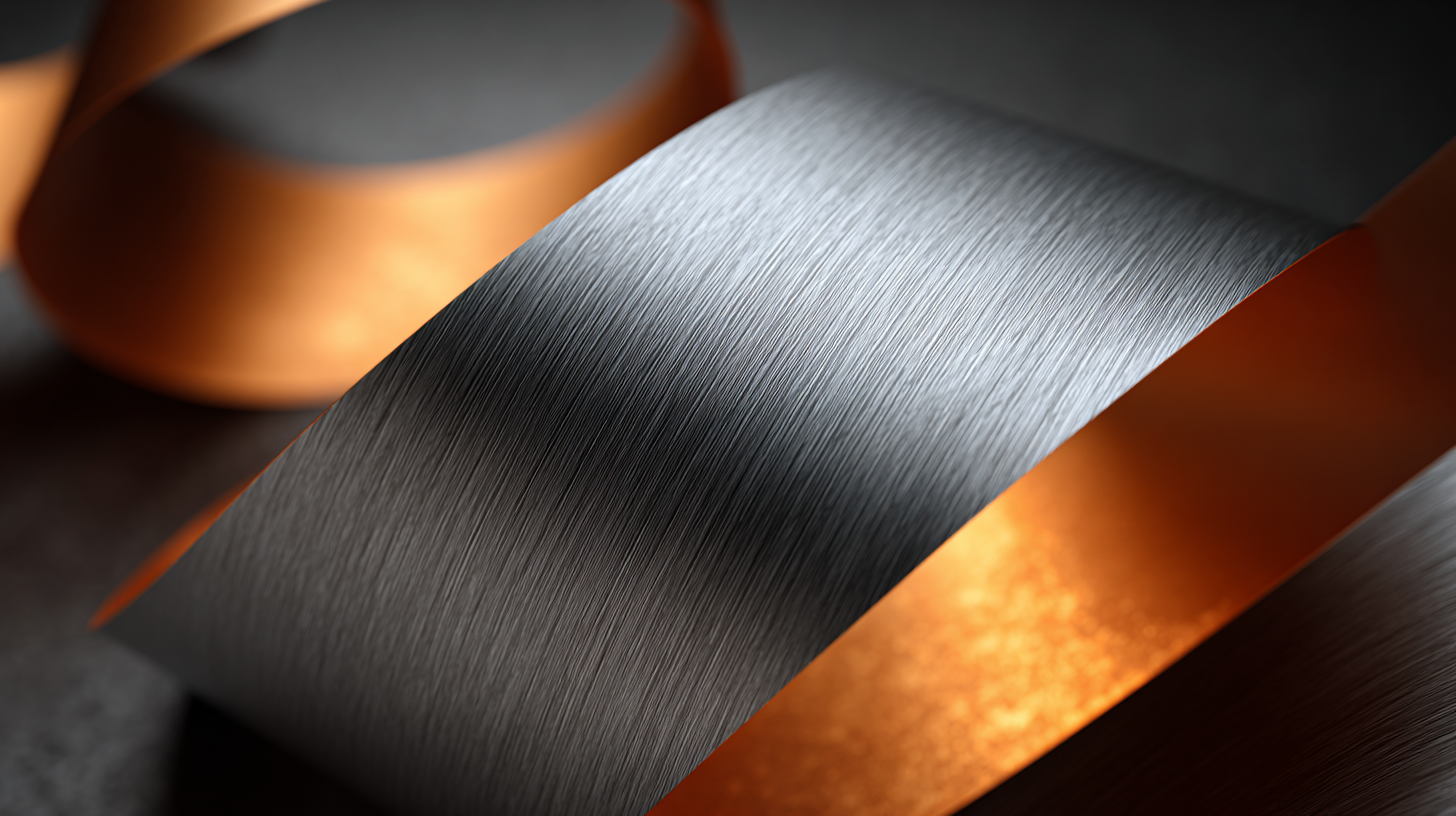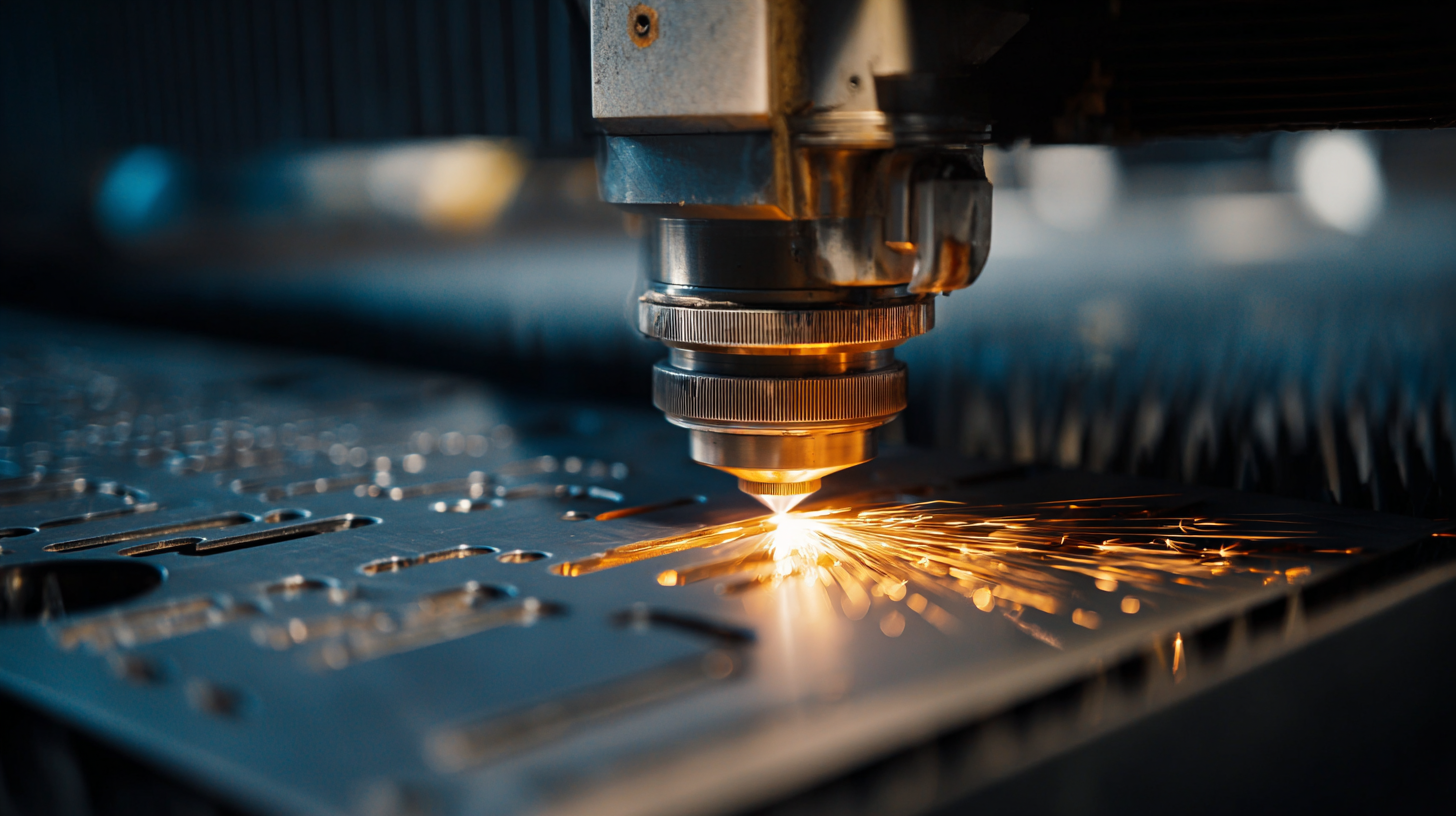
The sheet metal manufacturing industry is on the brink of significant transformation, influenced by advancements in technology and evolving market demands. According to a report by MarketsandMarkets, the global sheet metal market is anticipated to reach USD 324.28 billion by 2025, growing at a CAGR of 5.8%. This growth is driven by increased utilization in various sectors, including automotive, aerospace, and electronics, where precision and efficiency are paramount. Moreover, innovations in automation and smart manufacturing processes are set to further enhance productivity and reduce costs, leading to a paradigm shift in traditional manufacturing practices. This exploration of the future of sheet metal manufacturing highlights not only the trends reshaping the industry but also the implications for manufacturers striving to remain competitive in a rapidly evolving landscape. As these factors converge, understanding their impact becomes essential for stakeholders aiming to capitalize on the opportunities presented by this dynamic sector.

The sheet metal manufacturing industry is undergoing a significant transformation driven by innovative technologies.
Recent studies, including a report from MarketsandMarkets, indicate that the global sheet metal market is projected to grow from $228.12 billion in 2021 to $313.32 billion by 2026, at a CAGR of 6.7%. This growth is largely attributed to advancements in automation, laser cutting, and additive manufacturing, which enhance productivity and precision in manufacturing processes.
One standout technology in this realm is the adoption of Industry 4.0 practices, integrating IoT and AI to streamline operations. Machine learning algorithms can predict equipment failures, thereby minimizing downtime and maintenance costs. According to a report by Deloitte, manufacturers that invest in smart technologies can expect a productivity increase of 20-30%.
Tips: To stay competitive in this evolving market, it's essential to embrace these technological advancements. Consider investing in training for your workforce to enhance their skills in operating new technologies, and explore partnerships with tech firms that specialize in automation and smart manufacturing solutions. Adapting to these trends not only increases operational efficiency but also positions your organization favorably in a rapidly changing industry landscape.
The sheet metal manufacturing industry is undergoing a significant transformation as sustainability becomes a central focus. Modern production methods are increasingly integrating sustainable practices, such as recycling scrap metal and utilizing energy-efficient machinery. These practices not only reduce environmental impact but also enhance operational efficiencies and lower costs. By adopting greener technologies, companies can significantly cut down on waste generated during the manufacturing process, creating a more sustainable supply chain.
Moreover, the implications of these sustainable practices extend beyond production. As consumers and regulatory bodies demand more environmentally friendly products, companies that prioritize sustainability are likely to gain a competitive edge. This shift affects industry trends, driving innovation as manufacturers seek to develop eco-friendly products that appeal to a more conscious consumer base. Furthermore, the push for sustainability is encouraging collaborations across the supply chain, fostering partnerships focused on developing and implementing greener solutions in sheet metal production. The industry's future relies on these sustainable initiatives, which promise to reshape not just manufacturing processes but the entire market landscape.
| Sustainable Practice | Impact on Production | Industry Trend | Carbon Footprint Reduction (%) | Cost Savings per Year ($) |
|---|---|---|---|---|
| Recycling Scrap Metal | Enhanced Material Utilization | Circular Economy | 30% | 15,000 |
| Energy-Efficient Machinery | Reduced Energy Consumption | Sustainable Manufacturing | 25% | 20,000 |
| Use of Water-Based Coatings | Lower VOC Emissions | Eco-Friendly Practices | 15% | 10,000 |
| Additive Manufacturing | Less Material Waste | Innovation in Metal Fabrication | 40% | 25,000 |
| Using Renewable Energy Sources | Decreased Dependence on Fossil Fuels | Green Energy Transition | 50% | 30,000 |
The landscape of sheet metal manufacturing is undergoing a significant transformation, driven largely by advancements in automation and robotics. As industries strive for greater efficiency, the integration of AI-powered robotic solutions is redefining traditional manufacturing processes. These intelligent systems are capable of optimizing production, reducing operational costs, and enhancing sustainability—key factors that are becoming critical in today’s competitive market.
Tips: Embrace the shift to automated technologies to remain competitive. Investing in robotics not only streamlines production but also increases precision in operations, especially in sheet metal bending processes. Companies that adapt to these innovations will not only boost their productivity but also align with industry trends towards sustainability.
The rise of collaborative robots (cobots) further highlights the future of flexible manufacturing. Unlike traditional industrial robots, cobots are designed to work alongside human operators, adapting to various manufacturing scenarios. This synergy not only promotes a safer working environment but also leverages the unique strengths of both humans and machines. As sheet metal fabrication evolves, embracing these advanced robotic solutions can provide a substantial competitive edge in the ever-changing global market.

The integration of artificial intelligence (AI) and machine learning in sheet metal design is revolutionizing the manufacturing landscape. Recent trends indicate that companies leveraging these technologies can significantly enhance their design efficiencies and productivity. According to a systematic review published on the applications of deep learning in mechanical engineering, AI algorithms can analyze complex datasets, leading to better predictive maintenance and process optimization. This shift is particularly crucial as the industry moves towards greater automation and digitalization, with a reported growth of up to 20% in efficiency for firms adopting advanced manufacturing technologies.
Furthermore, the rapid advancements in laser cutting technology are reshaping the sheet metal processing sector. A study highlights how diversified applications of laser cutting cater to both small job shops and large OEMs, aligning with the wider trend of customization and speed in production. The International Federation of Robotics also emphasizes that the future of industrial design will prioritize modularity and scalability, allowing manufacturers to respond more swiftly to market demands. As these innovations unfold, the role of AI will continue to be pivotal, not just in design but across the entire manufacturing process, heralding a new era of precision and efficiency in sheet metal manufacturing.
The demand for customization and personalization in sheet metal products is reshaping the manufacturing landscape. According to a recent report by MarketsandMarkets, the global sheet metal fabrication market is projected to reach USD 265.5 billion by 2026, growing at a CAGR of 6.9% from 2021. This growth is significantly driven by the increasing consumer demand for tailored solutions across various industries including automotive, aerospace, and construction. Manufacturers are increasingly adopting advanced technologies like laser cutting and CNC machining, enabling them to create unique designs that cater to specific client needs.
**Tips:** When venturing into customized sheet metal products, consider investing in advanced design software to streamline the prototyping process. This can significantly reduce lead times and allow for more responsive adjustments based on customer feedback.
Furthermore, as personalization becomes a key differentiator, companies are leveraging data analytics to improve their offerings. According to a report by Grand View Research, over 70% of manufacturers are now using data-driven decision-making to anticipate customer preferences and trends. This approach not only enhances customer satisfaction but also boosts operational efficiency.
**Tips:** Engage directly with your customers throughout the design process. Implementing a collaborative platform can facilitate real-time feedback and ensure the final product meets or exceeds client expectations.






